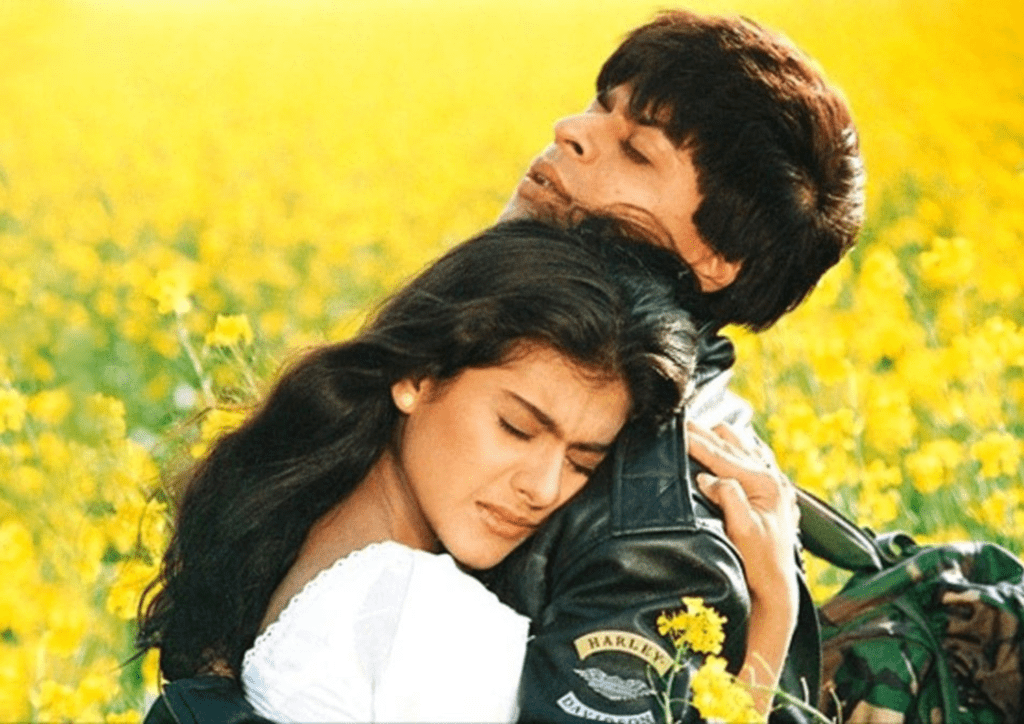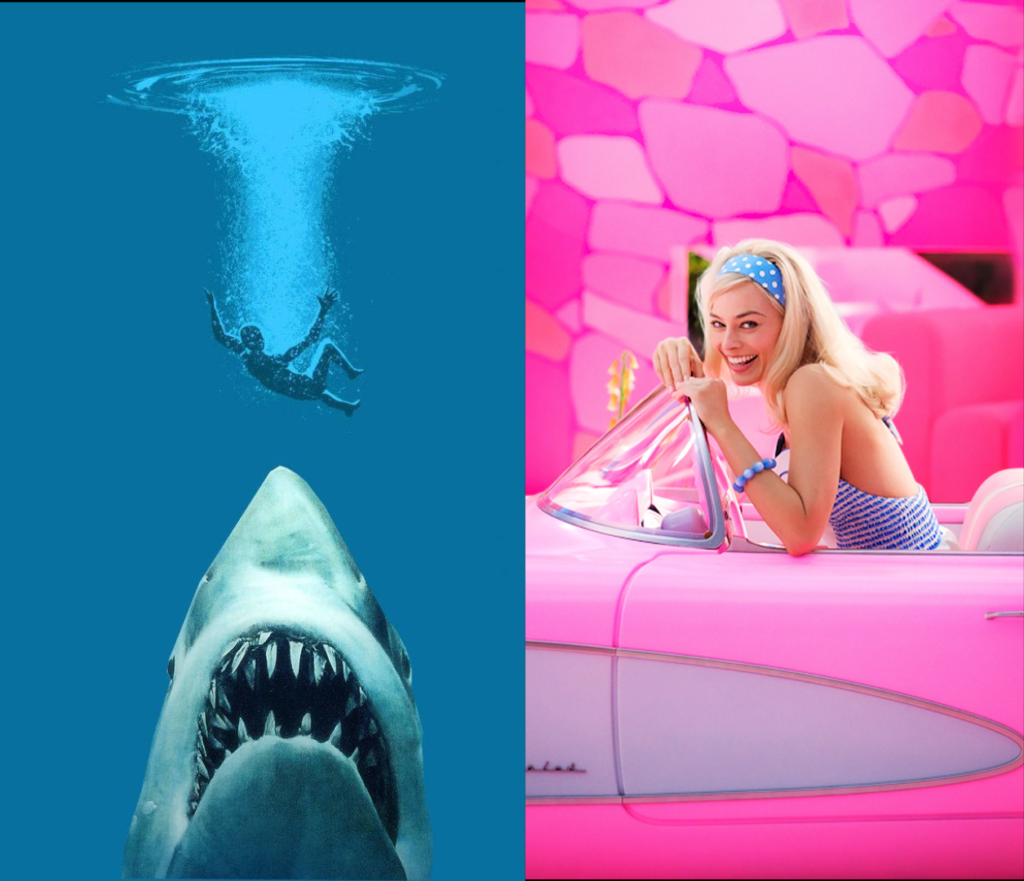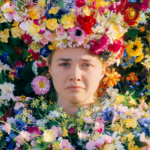‘Dilwale Dulhaniya Le Jayenge,’ commonly referred to as DDLJ, is a movie known for its iconic romance, memorable soundtrack, cultural impact, and influence on an entire generation. Visually, the film is so mesmerizing that even to this day, it feels like a dream sequence, much like our version of Disney movies. Breaking all records at the box office, DDLJ became one of the most beloved romantic movies of all time in the history of Hindi cinema.
When the film was released, the entire nation celebrated it. It wasn’t just any movie; it turned out to be a festival for India. The praises for the film poured in from every corner of the country. Whether you turned on the radio or TV, songs from ‘Dilwale Dulhaniya Le Jayenge’ were ubiquitous – from marriages to ladies’ sangeet to every cassette player. The movie is often hailed as India’s quintessential love story, with its characters being likened to the modern-day Laila Majnu, albeit with a happier ending. The craze for the movie is evidenced by the fact that even after 28 years since its release, it continues to run in one of the major cinema halls in Mumbai. With the exception of COVID interruptions, Maratha Mandir has screened the film every single day since its 1995 debut.
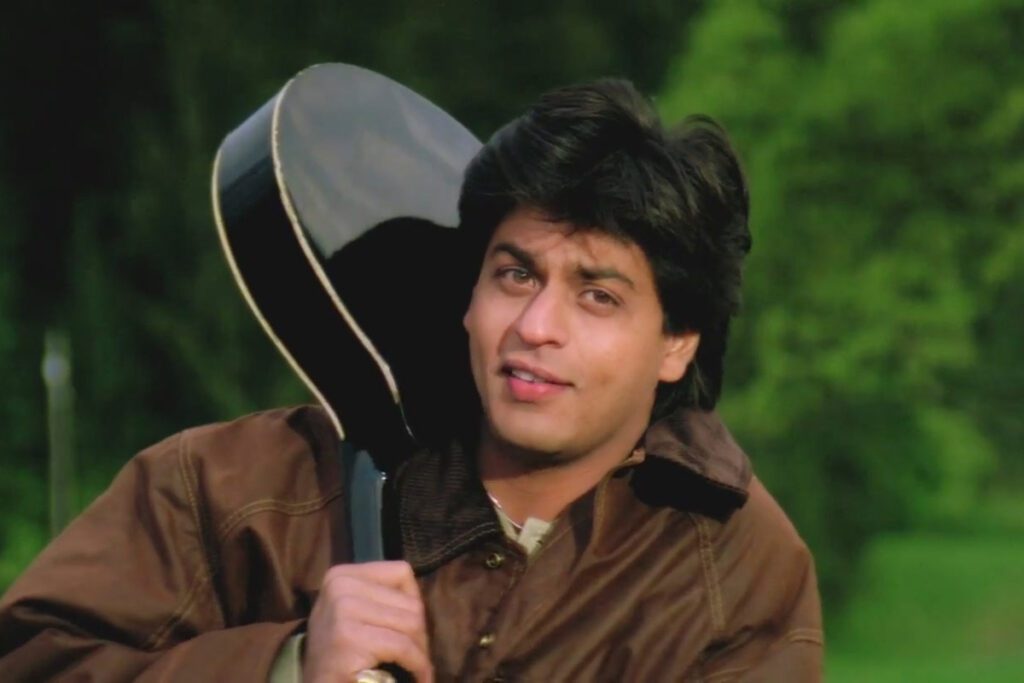
Iconic dialogues like “Bade Bade desho mein aisi choti choti baatein hoti rehti hai,” (Translation: “In big countries like these, small things keep happening.”). “Agar ye tujhe pyar karti hai toh yeh palat ke dekhegi,” (Translation: “If she loves you, she will turn back to look at you.”). “Maine kaha tha na, Babuji nahi manenge,” (Translation: “I told you, Dad won’t agree.”) and “Jaa Simran Jaa, Jee le apni Zindagi” (Translation: “Go Simran, Go. Live your life.”) are few of many that are still used by people, either in the context of the film or in their personal exchanges.
Immediately after the release of the movie, Raj and Simran became symbols of love and hope, with Simran representing every guy’s dream, and girls throughout the country began to wait for their Raj. Recently, a talented actress in the Hindi film industry mentioned in an interview, ‘DDLJ has spoiled me; I am still waiting for my Raj.’ Well, now that she is married, we hope she has found him.
What is interesting to note is that we are the second-largest film industry in the world, known for producing around 1500 movies per year. From 1995 to 2005, the decade saw a plethora of movies centered around themes of love. So how did one movie become so significant to the masses that even three decades later, it continues to be a cultural touchstone, especially for the generations now in their mid-30s and above? That raises another important question: why does this DDLJ phenomenon not hold true for subsequent generations, and why is its impact and influence limited to the generation before?
Let’s find out the answer to these crucial questions.
NRI characters with Indian value system
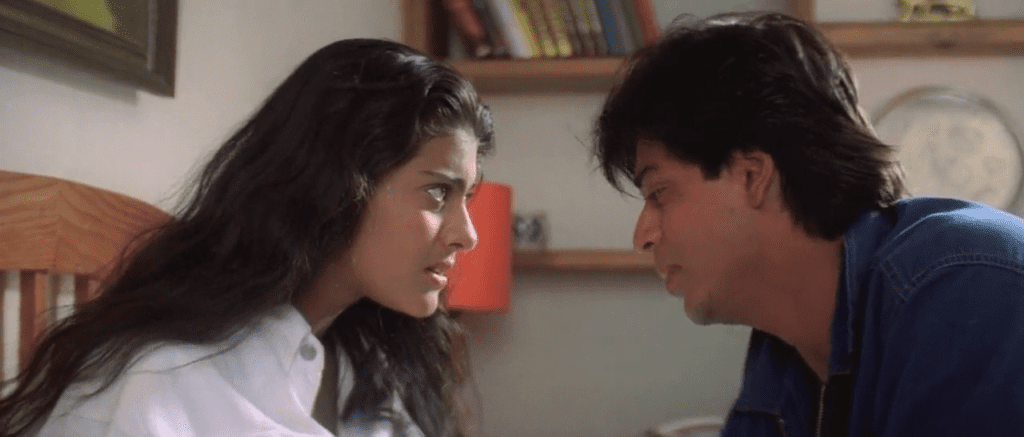
As we know, cinema is not just a creative medium for a filmmaker to put forth his ideas; it often serves as a reflection of society at large and mirrors the socio-cultural situations of the time. Remember this dialogue from the film: “Main ek hindustani hoon, aur main janta hun ek hindustani ladki ke liye uski izzat kya hoti hai?” (Translation: “I am an Indian, and I know what respect means for an Indian girl.”) Despite their NRI origins, every character in the film is portrayed as a core-hearted Indian, deeply connected to their culture, possessing an Indian mindset, and showing respect towards age-old traditions. This goes way too well with audiences who share the same values as the characters in the film.
Convenient Solutions
In one sequence, the girl wants to travel and explore the world, while father protests due to concerns about her safety, particularly considering her gender. Well, that was the story in many households at the time. What’s interesting is that the movie didn’t just highlight the problem; it also offered a convenient solution for girls to manipulate their parents through religious acts and promises of maintaining the honor of the family by not falling in love. This solution seemed convenient for both the youngsters and the parents, and no one took offense.
In another sequence, despite her best efforts to avoid falling in love, the poor girl eventually does. However, she refuses to marry against her father’s wishes and agrees to marry the man of his choice, a situation every Indian could relate to in 1990s India. Once again, the movie not only raises the issue but also presents a solution that promises to keep everyone happy – we’ll come back to that.
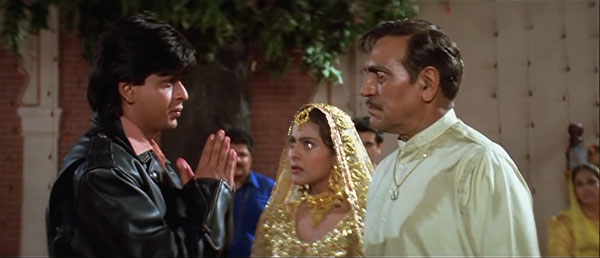
Later in the movie, unable to resist her feelings, the girl attempts to convince the guy to run away with her. But being the ultimate Raj he is, he plays a trump card, earning him the status of India’s heartthrob and the man of every woman’s dream. He says, “Nahi Simran, nahi. Bhaga toh parayo se jaata hai, apno se bhag ke hum jaate bhi toh kahan jaate. Yeh humare buzurg hain, humare maata pita, ye humari zindagi ke faisle humse behtar kar sakte hain.” (Translation: “No, Simran, no. We run away from strangers, if we run away from our own, where will we go? These are our elders, our parents; they can make better decisions for our lives.”) And finally, he concludes a minute-long monologue by giving Simran away to her father, saying, “Yeh lijiye, aapki amanat.” (Translation: “Here, take her, she is your responsibility.”)
The dialogue may seem cringeworthy today, but the audience in 1990s India received it with applause and enthusiasm. They were ecstatic to finally found a solution to a generations-old problem. Many saw themselves in Raj and Simran, realizing that perhaps they don’t have to choose between love and family. They can marry for love while also keeping their parents happy. But for girls, it came with a condition: find your ‘Raj’ first. Hence, the quest began.
Shifting Values
But why didn’t subsequent generations follow suit? It’s because society began to change; mindsets, cultures, and traditional values evolved with each generation. What was once a celebrated film in India is now viewed, especially by the younger generation, as a film imbued with a patriarchal mindset and toxic masculinity. They reject the idea of a film where the father makes every family decision, women are objectified, and equated with the family’s honor (as portrayed in various instances throughout the film).
Comfort Zone
There’s no denying that the generation who loved the film upon its release, still holds it close to their hearts and reveres its characters. However, this doesn’t imply that they haven’t adapted to changing times or are clinging to outdated values. Once sexually and romantically repressed society, has gradually loosened its grip, giving way for open conversations, empowering women to express themselves, and to some extent, allowing them the freedom to choose their life partners. Therefore, the generation born into this era finds it difficult to relate to the ideas and love depicted in the movie. Whereas, those from previous generations lived through those times. Despite societal evolution, their core values remain unchanged, leading to different interpretations of love for both groups.
Hence, what was once an escapist fantasy for the generation has now become their comfort zone.
